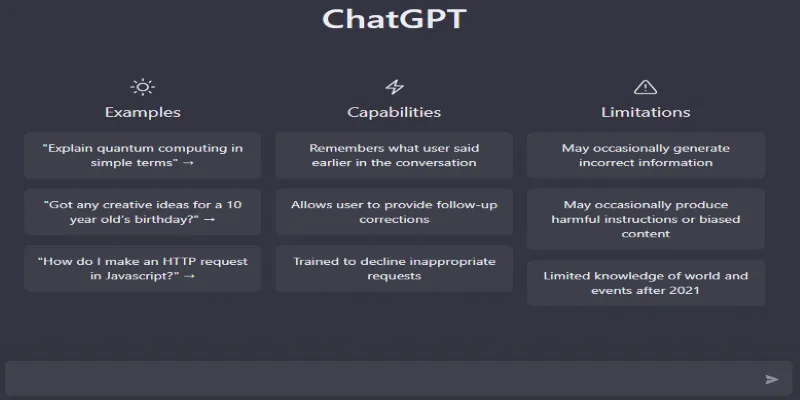Getting consistent output from language models can be trickier than it sounds. You might ask the same question multiple times and receive responses in different formats or tones. This unpredictability isn’t just a nuisance—it becomes a problem when building tools that rely on stable, repeatable outputs. Structured generation helps solve that.
By guiding the model to follow a defined format, you can reduce variance and make results more usable. Whether you’re building an assistant, automating workflows, or generating structured data, this approach has become essential to make models perform more reliably in everyday settings.

What Is Structured Generation and How Does It Help?
Structured generation involves setting rules for how the model should respond. Instead of leaving output wide open, you tell it to follow a format—like JSON, a list of key points, or labeled sections. This framework leads to more reliable results.
Large language models are built for flexibility. That’s their strength, but it can also lead to inconsistent outputs. One response might be casual and short, the next more detailed but unfocused. For many applications, that unpredictability is a problem. A helpdesk chatbot, for example, can’t switch between formats—it needs a consistent structure to work properly.
When outputs follow a defined shape, downstream systems—whether they’re scripts, interfaces, or humans—don’t have to guess how to handle them. That reliability saves time and prevents errors. Structure helps the model stay on topic, keeps its language aligned with expectations, and makes the results easier to process and reuse.
Techniques That Improve Prompt Consistency
A strong, structured generation strategy begins with clear instructions. Telling the model exactly how to format its response leads to more consistent results. Being vague or open-ended usually invites randomness. For instance, instead of saying, “Summarize this,” a better instruction would be, “Summarize in three sentences, each starting on a new line.”
Few-shot prompting helps, too. By giving the model examples of the exact input and expected output, it learns the format you want. These examples should be brief, clean, and directly aligned with the prompt style. Consistency across prompts and examples increases the chances the model sticks to the format.
Another method is schema enforcement. If your application expects structured data, such as JSON, you can define required fields and validate the output against the schema. If any fields are missing, the response can be discarded or re-prompted. This process keeps the output predictable and safe for automation.
There is also the option of using constrained decoding techniques—tools that limit the model’s word choices to keep it aligned with a specific format. While more advanced, this method is useful in applications like code generation or when embedding AI into tightly controlled systems.
Reducing Drift Over Long Outputs
Long outputs often start strong but lose structure partway through. This kind of “drift” makes it harder to rely on the full result. One way around this is to break up large prompts into smaller, manageable sections. Instead of asking the model to write an entire article at once, prompt it to write each section separately.

You can also use chain-of-thought prompting. Start by asking the model to generate an outline, then ask it to expand on each section. This step-by-step process reduces the chance that the model forgets the original intent midway through a long answer.
Re-prompting based on the initial output is another option. After getting a rough version, you can feed it back to the model with more specific instructions to revise or reformat. This second pass often brings the content more in line with the structure you want.
Keeping track of what works helps, too. By saving successful outputs and their prompts, you build a set of templates that improve consistency over time. These can become reusable components in your prompt library.
Testing is easier when the format is fixed. You can write scripts to check for completeness, formatting, and even tone. If something’s off, you know where to adjust your prompt without guessing. Structure makes feedback loops much cleaner.
Structured Generation Is Becoming the New Standard
As models are used in more serious applications—such as internal business systems, writing tools, and research tools—structured generation is becoming a baseline. Generating freeform text might work for a chatbot or creative writing, but most applications need something stricter. The rise of AI plugins, RAG pipelines, and document analysis tools has only increased the need for consistency.
Structured output supports scalability. You can plug AI into workflows without rewriting responses or cleaning up inconsistent formatting. Whether you’re categorizing feedback, summarizing articles, or auto-generating product descriptions, structured generation keeps the output usable from start to finish.
Writers and content creators benefit as well. Many use prompt templates that guide the model to respond in a fixed style, reducing editing time. Researchers working with transcripts or interview data rely on structured formats to tag and extract meaning accurately. In all these cases, the structure acts as a middle ground between full automation and manual review.
Developers also use structured generation to reduce errors and improve confidence. When models follow patterns, it’s easier to debug and test them. That’s why many prompt platforms now offer tools to define, test, and validate structured formats before sending them into production.
Conclusion
Language models are powerful, but they can be unpredictable. Structured generation offers a way to narrow that unpredictability and make outputs more useful. Whether you’re formatting responses for a product, building a user-facing tool, or managing data pipelines, structure gives you more control. By using clear prompts, examples, and format constraints, you improve consistency without sacrificing performance. Structured generations aren’t a restriction—they’re a way to make AI easier to work with at scale. For teams that care about quality, structure isn’t optional—it’s the foundation.
 zfn9
zfn9




















